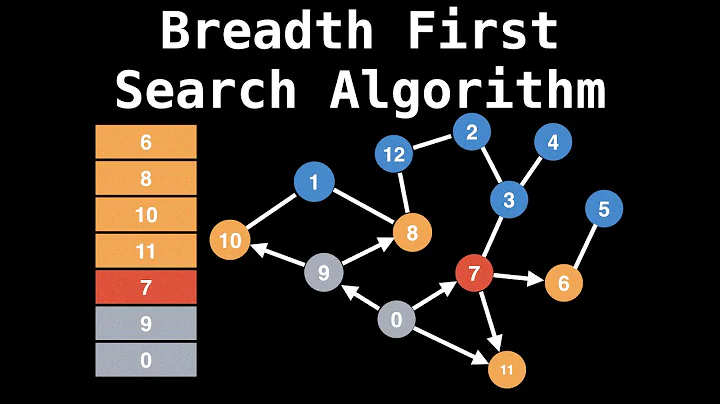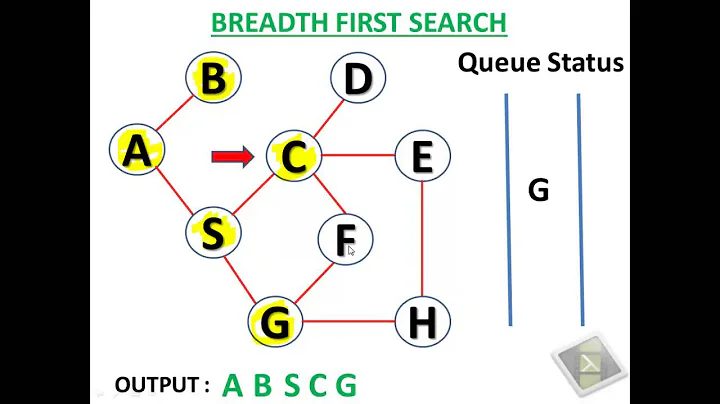Breadth-first traversal
Solution 1
A breadth first search is usually implemented with a queue, a depth first search using a stack.
Queue<Node> q = new Queue<Node>();
q.Enqueue(root);
while(q.Count > 0)
{
Node current = q.Dequeue();
if(current == null)
continue;
q.Enqueue(current.Left);
q.Enqueue(current.Right);
DoSomething(current);
}
As an alternative to checking for null after dequeuing you can check before adding to the Queue. I didn't compile the code, so it might contain some small mistakes.
A fancier (but slower) version that integrates well with LINQ:
public static IEnumerable<T> BreadthFirstTopDownTraversal<T>(T root, Func<T, IEnumerable<T>> children)
{
var q = new Queue<T>();
q.Enqueue(root);
while (q.Count > 0)
{
T current = q.Dequeue();
yield return current;
foreach (var child in children(current))
q.Enqueue(child);
}
}
Which can be used together with a Children property on Node:
IEnumerable<Node> Children { get { return new []{ Left, Right }.Where(x => x != null); } }
...
foreach(var node in BreadthFirstTopDownTraversal(root, node => node.Children))
{
...
}
Solution 2
var queue = new Queue<BinaryNode>();
queue.Enqueue(rootNode);
while(queue.Any())
{
var currentNode = queue.Dequeue();
if(currentNode.data == searchedData)
{
break;
}
if(currentNode.Left != null)
queue.Enqueue(currentNode.Left);
if(currentNode.Right != null)
queue.Enqueue(currentNode.Right);
}
Related videos on Youtube
Pritam Karmakar
Android Developer (Kotlin, Java, Retrofit, Dagger, Mockito, Powermock)
Updated on January 24, 2020Comments
-
Pritam Karmakar over 4 years
I was trying to solve one interview question, but for that I have to travel the binary tree level by level. I have designed BinaryNode with having below variable
private object data; private BinaryNode left; private BinaryNode right;Could someone please help to write the BreadthFirstSearch method inside my BinarySearchTree class?
Update: Thanks everyone for your inputs. So this was the interview question. "Given a binary search tree, design an algorithm which creates a linked list of all the nodes at each depth (i.e., if you have a tree with depth D, you’ll have D linked lists)".
Here is my Method, let me know your expert comment.
public List<LinkedList<BNode>> FindLevelLinkList(BNode root) { Queue<BNode> q = new Queue<BNode>(); // List of all nodes starting from root. List<BNode> list = new List<BNode>(); q.Enqueue(root); while (q.Count > 0) { BNode current = q.Dequeue(); if (current == null) continue; q.Enqueue(current.Left); q.Enqueue(current.Right); list.Add(current); } // Add tree nodes of same depth into individual LinkedList. Then add all LinkedList into a List LinkedList<BNode> LL = new LinkedList<BNode>(); List<LinkedList<BNode>> result = new List<LinkedList<BNode>>(); LL.AddLast(root); int currentDepth = 0; foreach (BNode node in list) { if (node != root) { if (node.Depth == currentDepth) { LL.AddLast(node); } else { result.Add(LL); LL = new LinkedList<BNode>(); LL.AddLast(node); currentDepth++; } } } // Add the last linkedlist result.Add(LL); return result; }-
David Weiser about 13 yearsWhat have you tried so far? Could you explain, in plain english, what the algorithm should do (i.e give pseudo-code)?
-
Kirk Woll about 13 yearsHow 'bout due diligence on Wikipedia? en.wikipedia.org/wiki/Breadth-first_search
-
-
CodesInChaos about 13 years@Via not surprising. A queue is the obvious choice for implementing a breadth-first search, just like you'd use a stack for depth first.
-
user3416507 over 7 years@CodeInChaos Thanks for your help. Although this is an old post, but I thought I leave a feedback in case it helps somebody. 1) I couldn't get your "fancier solution" to compile. 2) Your original solution worked well. Thanks again.
-
Saravanan about 7 yearsIf you could add a comment for down voting, it would be helpful
-
ProfK about 7 yearsA good guess would be that the OP asked for Breadth First and you opening sentence says your answer is for Depth First.
-
 M.kazem Akhgary over 6 yearsgood comparison for DFS and BFS, I understand DFS but I just couldn't get BFS, so the key to this problem is using a queue instead of stack. thanks.
M.kazem Akhgary over 6 yearsgood comparison for DFS and BFS, I understand DFS but I just couldn't get BFS, so the key to this problem is using a queue instead of stack. thanks. -
Lorenzo over 2 yearsAlso, you're basically allocating more memory than needed by creating a dictionary and many lists which isn't really needed if all you're doing is searching for a specific value
-
Lorenzo over 2 yearsThis is probably a stupid suggestion but you could replace both
ifconditions with a single one that checks fornullbefore matchingsearchedData; even if it's just 1 line less xD






